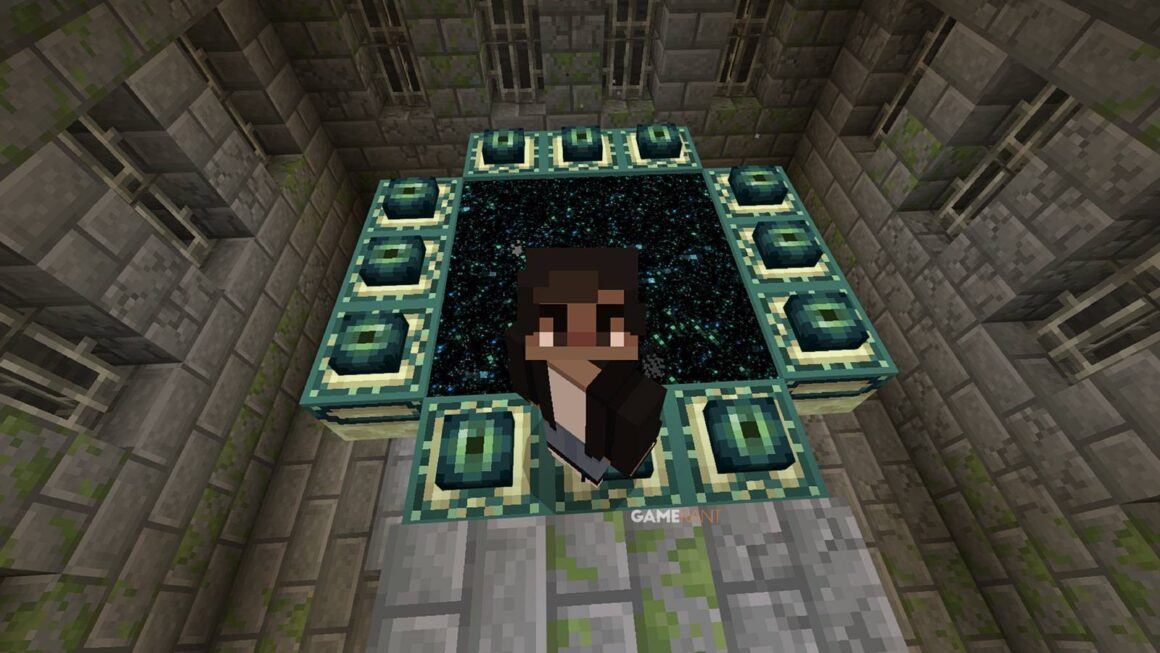Anomaly-hunting video games are a singular breed within the horror style, as what primarily units them aside is their gameplay. These titles nonetheless have the atmosphere, dread, and infrequently even bounce scares that outline the horror house, however relatively than counting on narrative and world-building to drive gamers ahead, they’re historically mechanical in nature, with methods like spot-the-difference, time strain, and escalation on the coronary heart of their development. As an anomaly-hunting recreation itself, Deadbolt Interactive and Perp Video games’ P1: Anchor Mild may nonetheless possess a few of these traits, however certainly one of its core methods has one easy rule: do not transfer.
Indie game P1: Anchor Mild takes gamers to a gorgeous artwork deco lighthouse, the place the one means ahead is to climb it. Sometimes, nonetheless, they’ll haven’t any alternative however to remain fully nonetheless, lest they fail their run fully. Perp Video games’ Grant Wilde not too long ago stuffed Recreation Rant in on some particulars about P1: Anchor Mild‘s gameplay, particularly what makes it so distinctive. As he explains, this one rule of “do not transfer” might imply the distinction between success and failure for anybody making their means by the lighthouse, so that they might want to stay vigilant always.
P1: Anchor Mild’s Huge Mechanic Is a Recreation of Crimson Mild, Inexperienced Mild
For probably the most half, anomaly-hunting games incorporate a spot-the-difference system the place the core loop revolves round noticing when one thing is “off”, whether or not an object strikes, disappears, or seems the place it should not be. Some anomalies is likely to be apparent, just like the picture on a portray altering to one thing else. Others are extra delicate, like slight shifts in lighting or shadows behaving unnaturally. Whereas this may and customarily does make for a compelling and intuitive loop, nonetheless, for a recreation like P1: Anchor Mild that hopes to differentiate itself, it’d must discover extra distinctive mechanics.
When requested about how anomaly detection works in P1: Anchor Mild and what finally units it aside from different spot-the-difference mechanics, Wilde replied:
“On a base degree, it is very comparable. After you’ve got scouted the ground, you’ve got a alternative between two doorways. You are taking one if the ground is obvious and the opposite if you happen to spot an anomaly. The strain is then taken to the following degree with what we eloquently name the ‘Do not Transfer’ mechanic (critically, in case you have a greater title for this, please tell us!). It is successfully ‘grandmother’s footsteps’ or ‘pink mild, inexperienced mild,’ relying on the place on the earth you might be. Music is continually piped into the lighthouse by audio system, however it should typically lower out, and when it does, you should not transfer an inch. For those who do, you may be seen and handled.”
So, whereas P1: Anchor Mild does function the normal spot-the-difference system of most anomaly-hunting video games, the sport is seemingly at its most fun when gamers are navigating its “Do not Transfer” mechanic, which is actually a recreation of Red Light, Green Light. That will sound pretty easy at first, however Wilde does not appear to assume will probably be all that straightforward. As he elaborated:
“This mechanic is used to intensify the strain in a number of methods. As there is no such thing as a strategy to predict when the music cuts, you’ll have to at all times stay vigilant. As a run progresses, the consequence of creating a small mistake is larger and, due to this fact, so is the strain that’s drummed up in these sequences.”
It is likely to be sufficient for some occasional spot-the-difference gameplay to shake up the scene and maintain the hair on gamers’ arms standing up, however P1: Anchor Mild‘s “Do not Transfer” mechanic retains issues much more tense. The additional gamers progress in a run, the extra punishing will probably be for them to succumb to the anomaly in the event that they transfer after the music cuts. This combination of each visible and audio remark is one thing that makes P1: Anchor Mild‘s gameplay distinctive within the anomaly-hunting style, primarily as a result of it isn’t nearly remark this time, however about survival. Wilde continued:
“One other means it provides to the expertise is that it forces you to confront anomalies. In lots of different anomaly-hunting video games, if you happen to see an anomaly, you merely flip round to restart a loop. That is for weaklings. In P1: Anchor Mild, you might be prone to be left nose to nose with one thing very unsettling, figuring out that if you happen to transfer even an inch, it is curtains. You’ll frequently be left completely helpless, combating towards the voice in your head shouting ‘Run, run, run!'”
That is the place issues ought to be at their most tense in P1: Anchor Mild, because the music cuts and gamers are inspired to cease shifting, however they might not be alone. Quite than operating from an anomaly, gamers should face it head-on whereas remaining fully nonetheless. This creates a way of dread that some anomaly-hunting video games solely trace at, pushing gamers into conditions the place stillness turns into extra terrifying than action and jump scares, and survival means resisting probably the most fundamental human intuition to flee.
P1: Anchor Mild launches on PC by way of Steam on September 9, 2025, PlayStation on October 14, 2025, and Xbox on November 11, 2025.










